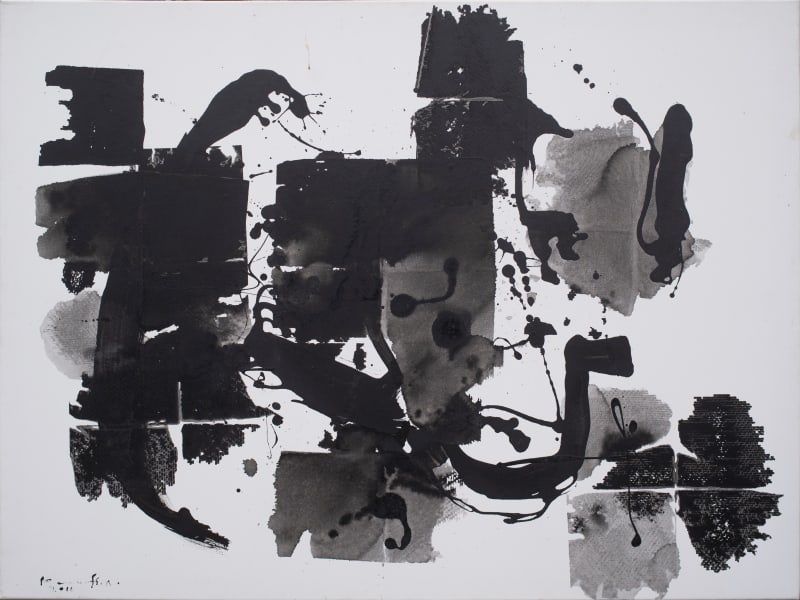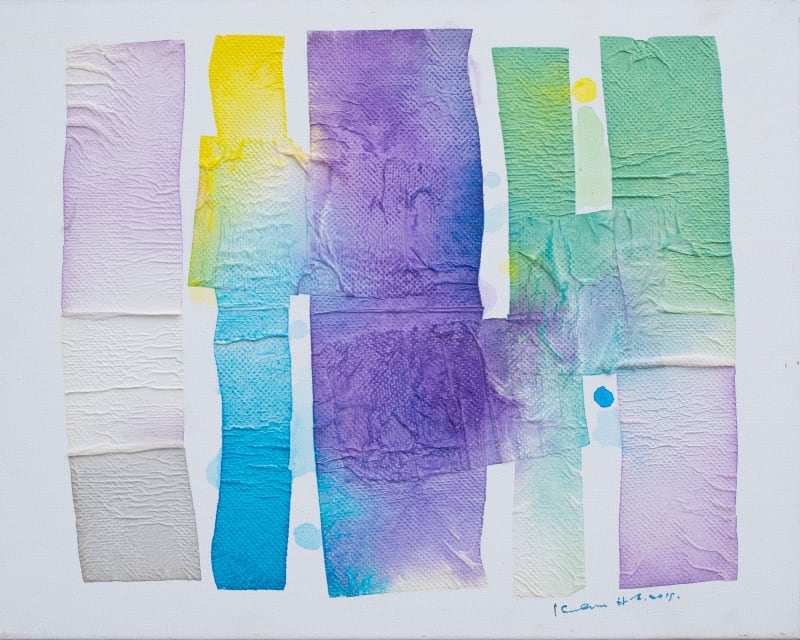H. A. Karunaratne (b. 1929, Kotalawela) is widely considered the father of abstract art in Sri Lanka. Karunaratne exhibits masterful dexterity in exploring the interplay between diverse materials—ranging from fabric to metal—to evoke a sense of rhythm, energy, and dissonance. Karunaratne's distinctive artistic approach bears resemblance to American Abstract Expressionism and is deeply influenced by Buddhist and Zen philosophies. With a career spanning over six decades, Karunaratne is a distinguished artist and pedagogue renowned for his profound impact on abstract expressionism within the country’s art institutions. His contribution to art has been recognized both in Sri Lanka and internationally. He has been honoured with the ‘Kala Suri’ by the Government of Sri Lanka and ‘The Order of the Rising Sun, Gold and Silver Rays’ by the Japanese government.
He attended the Government College of Fine Art in Colombo (1958), where he studied under Stanley Abeysinghe and David Paynter. He was awarded a Japanese Government Scholarship to the Tokyo National University of Fine Arts and Music (1961) and a Fulbright Award, which took him to the Pratt Institute in New York (1966). Karunaratne was also a lecturer at the Institute of Aesthetic Studies, University of Kelaniya, Colombo.
His work has been exhibited at KALĀ, Lionel Wendt Art Centre, Colombo (2024); SAARC Artist’s Exhibition, Lahore (2004); 5th International Biennial Exhibition of Prints, Tokyo (1989); the 3rd Asian Art Show, Fukuoka Asian Art Museum (1989); the 3rd Asian Art Biennale, Dhaka (1986); Sri Lanka Contemporary Paintings, Commonwealth Institute, London (1981); South Asia Festival of Culture, National Gallery of Modern Art, New Delhi (1981); Fukuoka Asian Art Museum, Fukuoka (1980); and the Sao Paulo Biennale, Sao Paulo (1969). His work is held in various private and public collections, including the National Gallery of Modern Art, Delhi, and national museums in Japan including the Museum of Modern Art, Kamakura and Hayama, Himeji City Museum of Art, Himeji, and National Museum of Art, Osaka, and the Fukuoka Collection, Fukuoka.



